The Earth is a fantastic planet. From vast arid deserts to thick tropical rainforests to coral reefs and high alpine meadows, it contains everything.
Have you ever paused to consider the variety of biomes that exist on our planet?
We’ll look at the 26 amazing biomes that exist across the planet in this piece. We’ll teach you about the various plants and animals that call each of these separate ecosystems home, as well as explain what makes a biome a biome.
What is a Biome?

The term “biome” may seem to be straightforward enough, but researchers disagree about what it really means.
A biome is defined as an region with a consistent climate that may sustain a certain group of flora and animals, according to various groups.
This seems to be a straightforward definition. The difficulty is that distinguishing the term ‘biome’ from words like ‘ecoregion’ and ‘ecological zone’ is challenging.
A biome is sometimes defined as a collection of ecoregions or ecological zones, according to whom you ask. These ecoregions also include ecosystems, which support a variety of habitats. Some scientists, on the other hand, do not make a distinction between “biome” and “ecoregion,” so this is still a point of contention in scientific communities.
To keep things straightforward, we’ll stick to how the World Wide Fund for Nature (WWF) categorizes biomes in this article. With its Global 200 initiative, the organization began categorizing biomes. We’ll talk about 26 biome types (which are known as ecoregions in certain WWF publications) here.
26 Spectacular Types of Biomes of the World
Classifying distinct regions of the Earth by their flora, fauna, and climate isn’t simple on a planet with tens of millions of plant and animal species. Thankfully, we now have this list of the 26 types of biomes thanks to the hard work of a few dedicated scientists.
Next, we’ll examine the WWF’s definition of 26 biomes in more detail. As a result, you’ll be an expert on global ecology in all fields.
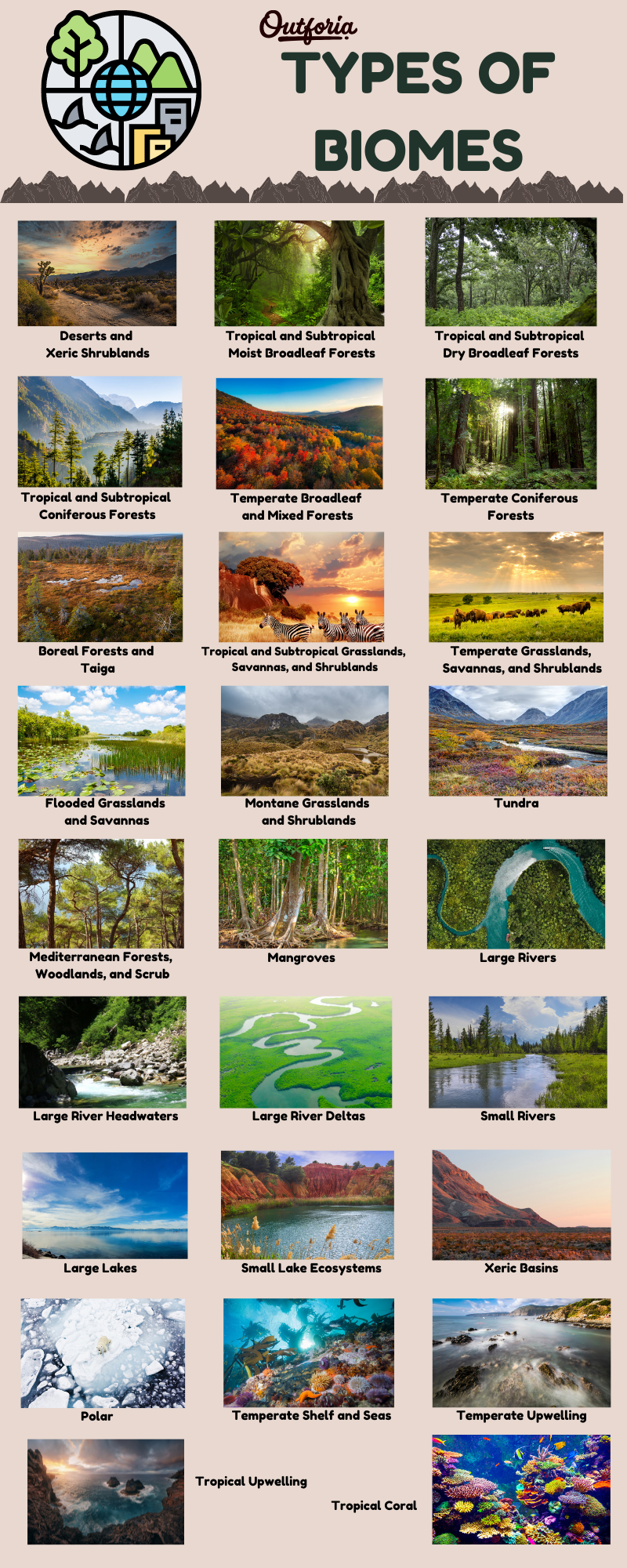
1. Terrestrial Biomes
The terrestrial biomes are the first major group of biomes we’ve identified. All of these biomes have plant and animal species that live on the ground. So, without further delay, here are the 14 terrestrial biomes that exist on our planet.
1.1 Deserts and Xeric Shrublands
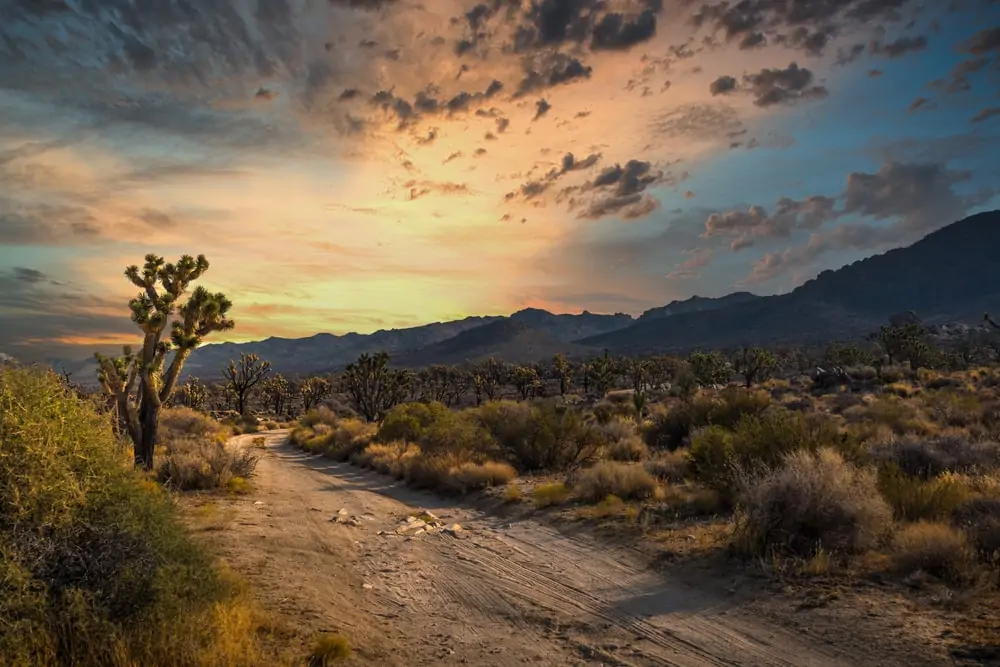
The deserts and xeric shrublands biome are the first on our list. From Australia’s Outback to the Sahara Desert, this biome exists in large swaths across the globe.
Precipitation is generally less than 10 inches (25 cm) every year in this area. Hot deserts like the Mojave, on the other hand, may be found in these deserts, whereas cold deserts like the Gobi are found.
This biome’s vegetation is well-adapted to living in a dry environment and much of it is succulent. Succulents are one of the most common plant species. Several of the biome’s most renowned animal species, such as camels, are able to go for days or weeks without drinking water.
1.2 Tropical and Subtropical Moist Broadleaf Forests
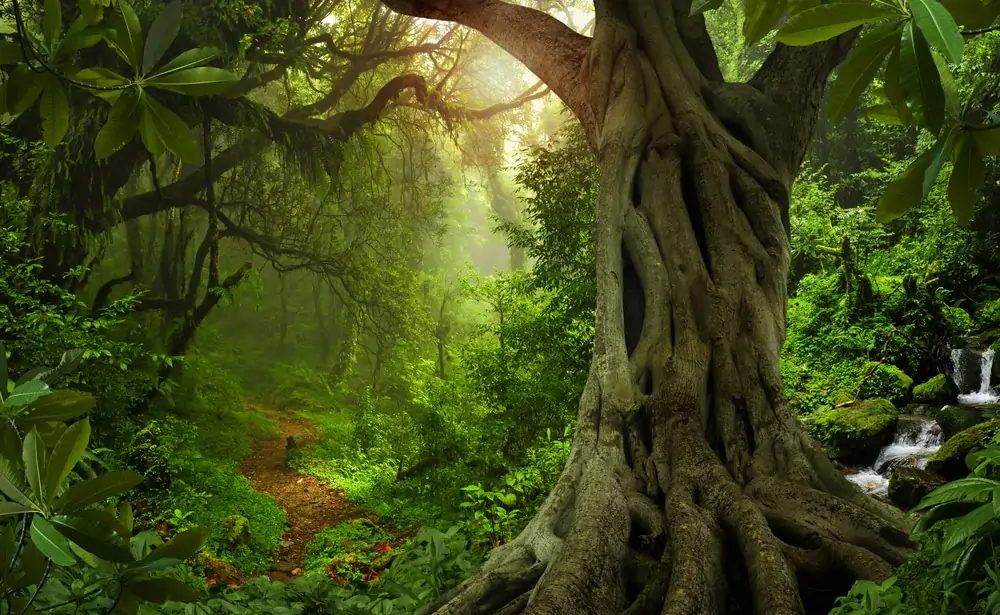
Most of what we call a tropical rainforest is included in the tropical and subtropical wet broadleaf forests biome. The Amazon Rainforest and the woods of Southeast Asia are two examples of this biome, which may be found across tropical latitudes.
The high annual rainfall levels characteristic of these forests are a defining feature. These woods get over 79 inches (200 cm) of rain each year on average, and in some cases, a lot more.
Because of their high moisture levels and hot temperatures, these forests are some of the most biodiverse places on Earth. Tropical woods are known for their thick foliage and the variety of magnificent creatures that may live there, such as lions and tigers.
1.3 Tropical and Subtropical Dry Broadleaf Forests

In places near to tropical rainforests, tropical and subtropical dry broadleaf woods are common. Warm year-round temperatures prevail in these areas, which include much of southern Mexico and the Indian subcontinent.
The dry woods have a lengthy yearly dry season, which distinguishes them from tropical and subtropical wet broadleafwoods and tropical rainforests. As a consequence, compared to tropical woods, they are somewhat less diverse.
Despite this, this biome contains a stunning variety of plants and animals. In these arid woods, you may frequently encounter various monkey species and an incredible variety of birds.
1.4 Tropical and Subtropical Coniferous Forests

North America, Central America, and high-elevation regions of south-central Asia are home to the tropical and subtropical coniferous forests biome. The majority of these woods, particularly in the Sierra Madre del Sur and Sierra Nevada mountain ranges of Mexico, are situated.
This biome is dominated by coniferous trees, unlike the other tropical and subtropical forest biomes. They have lower amounts of precipitation and face colder temperatures than other nearby biomes on a regular basis.
The thick canopy of coniferous trees that dominates this biome prevents sunlight from reaching the forest floor, limiting plant life. As a result, there are a lot of fungus and fern species in this biome.
1.5 Temperate Broadleaf and Mixed Forests

One of the most widespread biomes on the planet is the temperate broadleaf and mixed forests biome. Eastern North America, western Europe, eastern Asia, southern South America, and eastern Australia are all home to this species.
The temperature and precipitation vary significantly throughout the year in these forests, which is a key feature. Several of these woodlands experience four seasons.
Oaks, birches, beeches, and even maples are common tree species in these forests, which may change. The temperate broadleaf and mixed woods have a diverse wildlife, yet different sorts of squirrels, deer, chamois, and bear are common.
1.6 Temperate Coniferous Forests

In terms of forest cover, temperate coniferous forests are very similar to tropical and subtropical coniferous forests. Nonetheless, in regions such as western North America and Canada, Central Asia, and coastal Norway, they may be found at higher latitudes.
Warm summers prevail in most of these woods, however winters may be mild on the coast but frigid on the interior. These forests may take a lot of winter snowfall, depending on the area.
Cedar, spruce, pine, and fir are among the main tree species found in these coniferous forests, alongside towering redwoods and giant sequoias. Elk, moose, deer, bears, and bobcats are some of the animal species found here.
1.7 Boreal Forests and Taiga
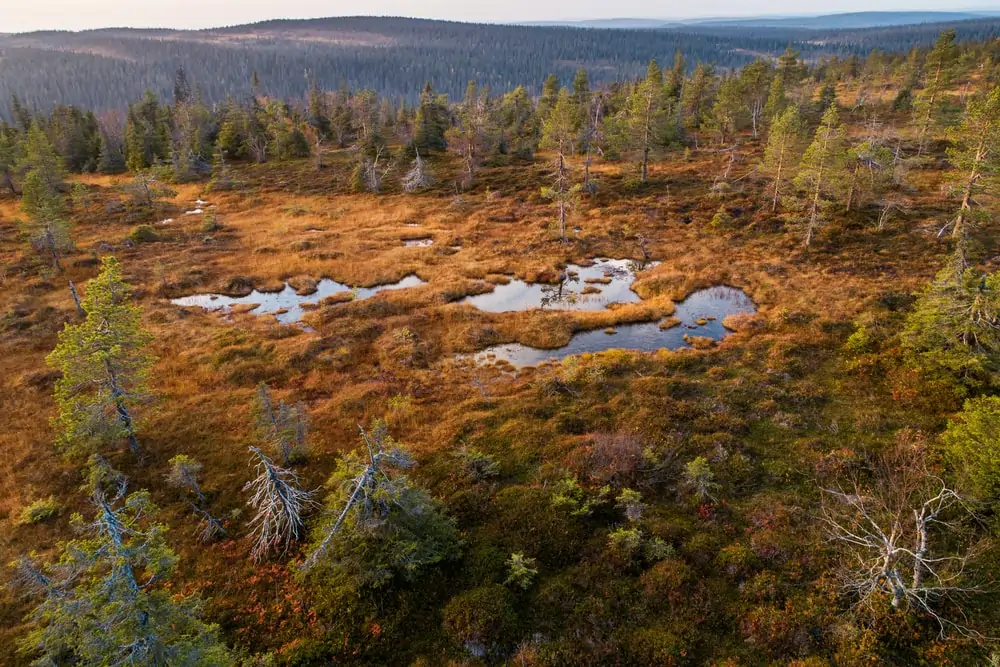
In the northern latitudes, boreal forests and taiga are a biome that is uncommon. In North America, Europe, and Asia, this biome may be found from northern Canada to Siberia in the subpolar areas.
The nutrient-depleted soils, frigid temperatures, and abundant snowfall in this biome restrict the diversity of species. Coniferous trees, such as birches, poplars, aspens, and cottonwoods, may grow in the boreal forest and taiga if they are properly managed.
Reindeer, arctic foxes, snowshoe hares, brown bears, lynx, and moose are just a few of the indigenous animal species found in boreal forest and taiga. Polar bears may occasionally enter the taiga, but they are more commonly seen in the tundra.
1.8 Tropical and Subtropical Grasslands, Savannas, and Shrublands

One of the largest biomes by total land area is the tropical and subtropical grasslands, savannas, and shrublands. Sub-Saharan Africa, northern Australia, and subtropical South America are all home to this species. Parts of Hawaii have this biome as well.
Semi-arid climates dominate the majority of this biome, with forest cover restricted to specific areas. The Serengeti plains in eastern Africa, as well as the Kimberly savannas in Australia, are examples of this.
Despite its aridity, this biome is very diverse. The baobab and the acacia are two of the most common tree species. Meanwhile, in sub-Saharan Africa, zebras and wildebeest; in South America, the Pampas deer and capybara are prominent animal species.
1.9 Temperate Grasslands, Savannas, and Shrublands
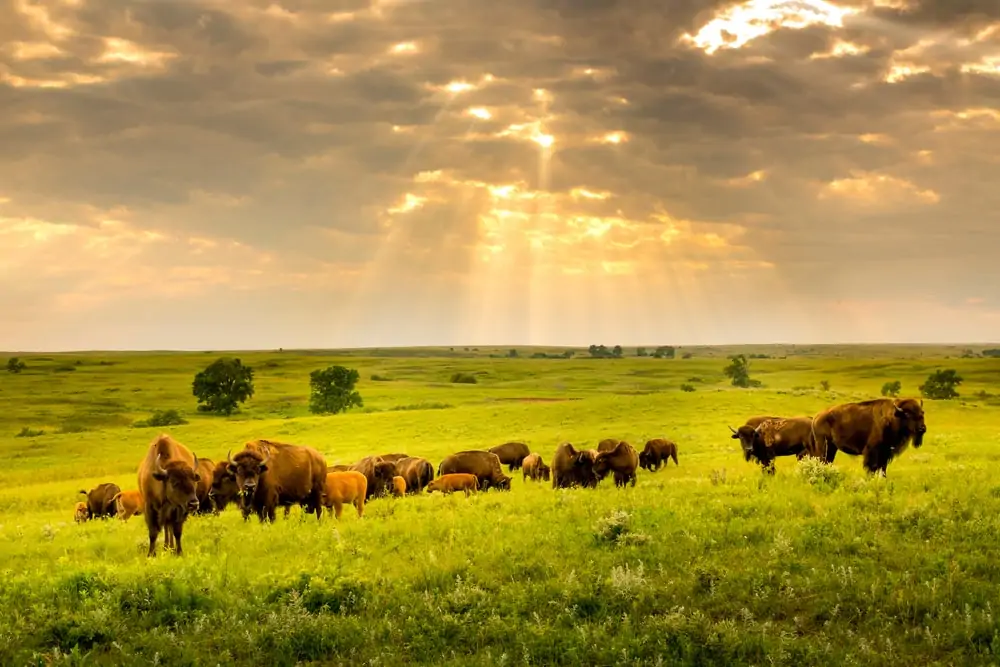
North and South America, Asia, eastern Europe, and southeastern Australia are covered in temperate grasslands, savannas, and shrublands. In North America, they’re referred to as prairies, in Asia, they’re referred to as steppe, and in South America, they’re referred to as pampas.
Dry regions with significant temperature fluctuations make up the majority of these grassland, savannas, and shrublands. There are very few trees on the property. Grasses and other drought-tolerant shrubs, on the other hand, dominate this biome.
The location of an animal species varies. However, buffalo may be found in the American grasslands, antelopes and kiangs in central Asia’s steppes, and guanco in South America’s Pampas.
1.10 Flooded Grasslands and Savannas
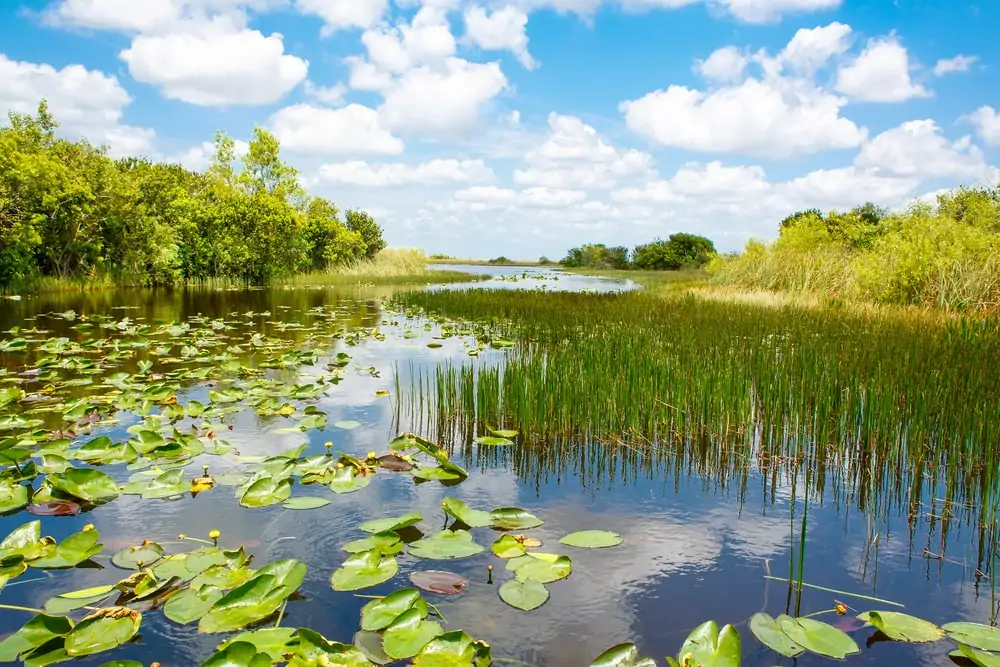
The total land area of flooded grasslands and savannas is one of the world’s smallest biomes. Only tiny sections of North America, South America, Asia, and Africa contain this biome. The Everglades in Florida and the Pantanal in Brazil, Paraguay, and Bolivia are two well-known sites included.
The flooded grasslands and savannas biome is characterized by wetlands that receive a lot of rain, as the name suggests. Despite the fact that this biome is just a tiny part of the Earth’s surface, it is essential in allowing many bird species to migrate.
The Pantanal, for example, has over 700 bird species while Florida’s Everglades have over 300. Alligators, caimans, marsh deer, bush dogs, tapir, capybaras, and giant anteaters are among the other species that may be found in this biome.
1.11 Montane Grasslands and Shrublands

The montane grasslands and shrublands biome is a rare edition of flora and fauna that thrives in harsh environments. It is one of the few biomes that can only be found at high elevations. South America, Central Asia, Africa, and New Zealand are all home to this biome.
The páramo in South America is perhaps the best-known example of these highland grasslands and shrublands. While there are some slightly drier montane grasslands found in Ethiopia’s Highlands, the páramo is relatively wet and chilly.
Grasses, bushes, and acacias are the dominant plant species in this biome. This biome is mostly devoid of trees, although you may see some tree stands in adjacent tropical savannas and meadows. The northern pudú (the world’s tiniest deer) and the Ethiopian wolf are two wildlife species that are only found in this biome.
1.12 Tundra
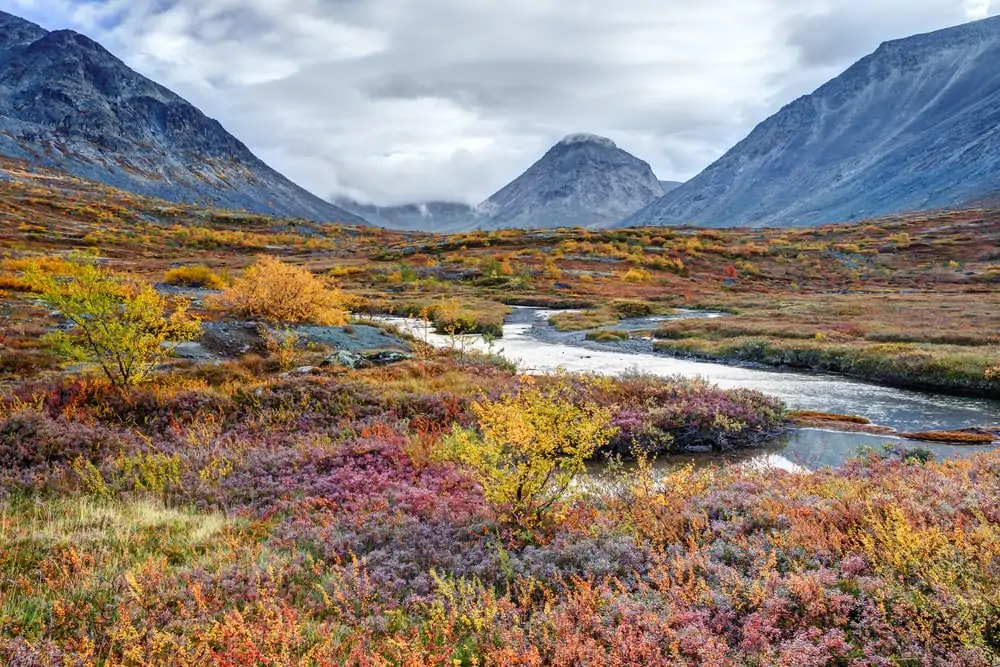
Only in the planet’s most northerly and southerly latitudes may the tundra be found, which is an incredible biome. Only Scandinavia, Alaska, Russia, Greenland, Iceland, Canada, and the sub-Antarctic islands are able to experience it because it is a treeless polar desert.
Only the most robust of plants and animals can thrive in the tundra. Little heaths, sedges, and dwarf shrubs dominate this biome, however there are areas of exposed rock and no vegetation cover.
The tundra contains a lot of the taiga’s species. Muskoxen and polar bears, on the other hand, may be found in the northern tundra. South Georgia, the Kerguelen Islands, and the South Sandwich Islands are home to the southern tundra. Many penguin species, such as the royal penguin, live on these islands.
1.13 Mediterranean Forests, Woodlands, and Scrub
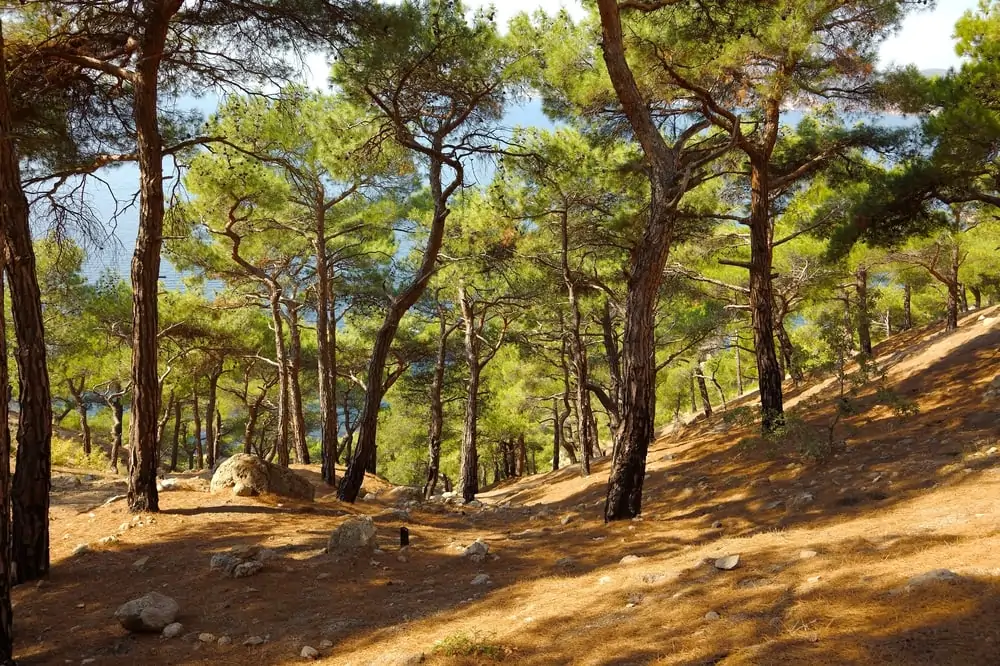
The Mediterranean woodlands, woodlands, and scrub biome is found in a variety of hot and arid regions across the globe, despite its name implying that it is exclusively located around the Mediterranean. This biome is mostly found along coasts, such as those in southern California and southern South Africa, with hot, dry summers and mild, rainy winters.
Chaparral, particularly in California, and matorral, particularly in South America, are two names for this biome. Mosaics of various vegetation types may be created in this biome, with combinations of them being smoothly integrated.
While some parts of this biome are mostly grasslands, oaks woodlands may be found in riparian regions, particularly in the west. Regular forest fires are important for the long-term survival of this biome’s numerous ecosystems, and they occur in most of it.
1.14 Mangroves
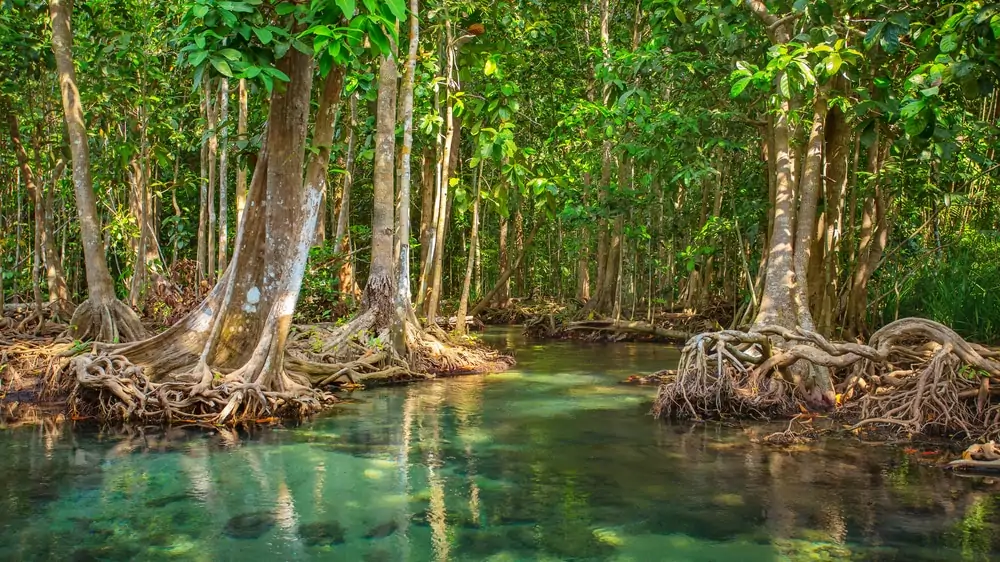
Mangroves are a distinctive kind of forest that thrives in waterlogged and salty soils and can be found along tropical and subtropical coasts. In the lower latitudes, you may observe mangroves in intertidal areas. The Philippines and Vietnam are two of the most well-known examples.
Only a few tree species are capable of surviving in the world’s mangroves’ salty soils. The red mangrove, mangrove palm, and black mangrove are among the few tree species that survive in the mangroves, according to researchers.
Mangroves, on the other hand, are prone to human development and are at a high risk of extinction. Since mangroves are common in coastal environments, many have been damaged, eliminated, or entirely removed in order to construct and maintain port facilities.
2. Freshwater Biomes
The WWF divides biomes into freshwater and marine categories, in addition to terrestrial biomes. Freshwater biomes come in seven different varieties, each of which may be found in several lakes, rivers, and streams across the globe.
2.1 Large Rivers

Some of the world’s greatest rivers fall under the category of large rivers. The Colorado and Mississippi rivers in North America, as well as the Yangtze in China and the Congo in sub-Saharan Africa, are examples of high-flow rivers.
In these rivers, there are far too many fish species to catalog. However, several of the Congo River’s slightly electrified elephantfishes are endemic to this large river.
2.2 Large River Headwaters

While the vast river headwaters biome covers only their headwater regions, it encompasses much of the world’s major rivers. Unique fish species adapted to life in the highland regions where main rivers originate are frequently found in these headwater areas.
The Upper Amazon, the Congo Basin Piedmont, and the Mississippi Piedmont are all parts of this biome, among other places. These cold, quick-moving waters support a freshwater environment with countless ecosystems downstream thanks to the species that are adapted to living in them.
2.3 Large River Deltas

Sediment-filled deltas exist at the mouths of rivers, just before they reach the ocean, lake, or sea where they end. The deltas of the world’s major rivers, such as the Nile, Amazon, Orinoco, Lena, and Volga rivers, make up the majority of the large river delta biome.
River deltas are extremely biodiverse places in general. The combination of salt and freshwater in these ecosystems produces distinct ecosystems where plants and animals may flourish, which is especially true for rivers that end in the ocean.
The Niger River is one of the biggest river deltas in the world. Both deltas (one inland and one coastal) in the Niger are biodiversity hotspots.
2.4 Small Rivers

We usually picture huge rivers and lakes when we think of biodiverse freshwater ecosystems. Yet, some of the finest freshwater ecosystems in temperate and tropical latitudes are found in the small rivers biome.
New Caledonia, Madagascar, and the Greater Antilles are just a few of the locations where this biome may be found. It is mostly made up of streams with high biodiversity, such as those found in southwestern Australia.
2.5 Large Lakes
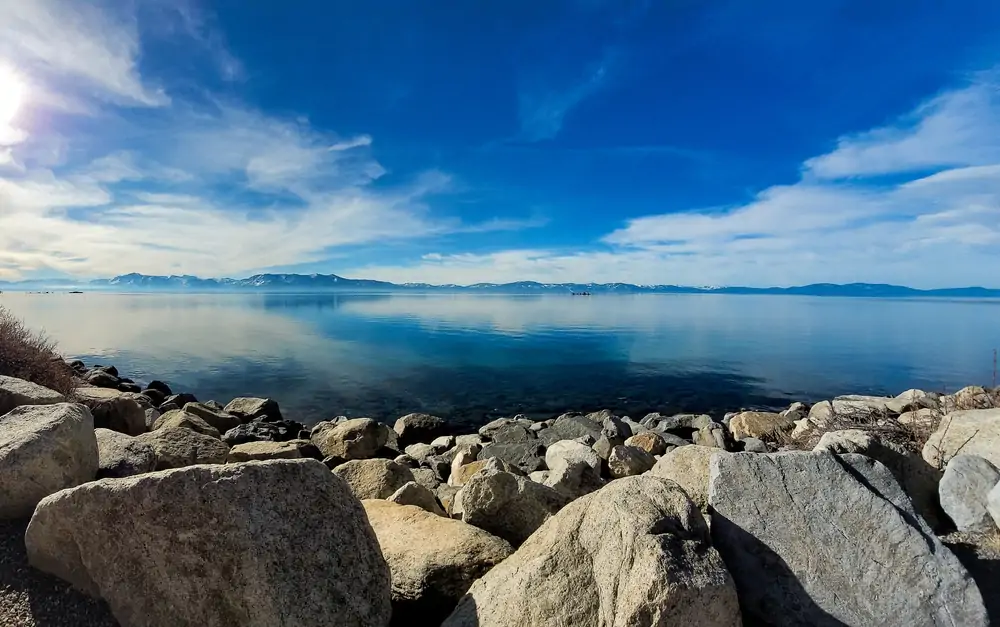
The Great Lakes and Lake Baikal are among the world’s biggest lakes, each with its own ecosystem. This biome encompasses large lake systems, such as the East Afrimay’s Rift Valley Lakes.
Different flora and wildlife may be found in each of these lakes, although they all have high levels of endemism. In Lake Baikal, for example, around 80% of the animal species are endemic, including the remarkable Baikal seal.
2.6 Small Lake Ecosystems

Little lakes may not seem to have a diverse ecosystem, but they do. This is especially true in tropical locations, where a tiny lake may harbor hundreds of fish species.
Lake Kutubu, for example, is 12 miles (19 kilometers) long and 2.8 miles (4.5 kilometers) broad, yet it has 13 indigenous fish species. Nevertheless, the Philippines’ Lake Lanao is 21 miles (33 kilometers) long and 12 miles (20 kilometers) wide, yet it houses roughly 18 indigenous fish species.
2.7 Xeric Basins

Xerical basins are the last remaining freshwater biome. These are places with relatively little permanent surface water, which is interesting. Rather, a plethora of freshwater springs thrive in these xeric basins, allowing life to flourish in otherwise dry places.
Central Australia, the Chihuahuan Desert, and Turkey’s Anatolian region are among the major xeric basins. Even though it lies in the middle of the desert, the Cuatro Ciénegas Basin in Mexico is home to three indigenous turtle species, eight indigenous fish species, and numerous indigenous snail species.
3. Marine Biomes
The marine biomes are, without a doubt, the most important. These water-based biomes, on the other hand, are solely made up of saltwater bodies. Each of the five marine biomes in the Earth’s oceans is incredibly diverse, and a wide range of flora and animals may be found throughout.
3.1 Polar

You may think of frigid, dark seas with limited life when you envision polar oceans. Due to their low temperatures and low salinity levels, the polar oceans are some of the world’s most biodiverse habitats, supporting a tremendous diversity of plankton.
Thousands of species rely on plankton for survival in the polar oceans, which include the Arctic Ocean, Southern Ocean, and their surrounding seas.
Baleen whales, such as the humpback, blue whale, and bowhead whale, as well as penguins, orcas, and dozens of other seal species are included in this category. Several albatrosses, petrels, terns, and fulmars are among the remarkable bird species found in polar oceans.
3.2 Temperate Shelf and Seas
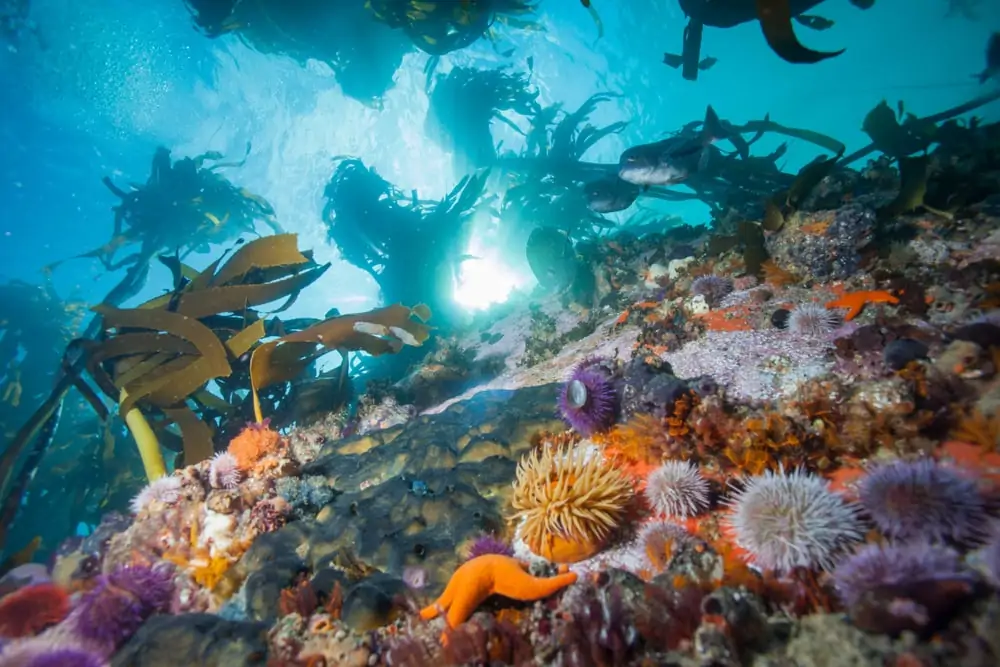
The temperate shelf and seas biome is one of the most bioproductive on the planet, located in the waters and along coastlines of temperate regions. The Mediterranean and temperate North Atlantic seas, as well as the temperate North Pacific, are included in this category.
Because most continental shelves are only 490 feet (150 meters) deep, much of this biome is rather shallow. Other important temperate estuaries, such as the Chesapeake Bay, may be found here, serving as vital habitats for migratory birds and marine life.
3.3 Temperate Upwelling

The upwelling zone in western North and South America refers to locations where upwelling waters support a diversity of fish species.
The upwelling of cold, nutrient-rich water supports enormous populations of fish and seabirds in these areas, which stretch from coastal Peru to Ecuador to Chile to Mexico. In regions impacted by the Humboldt and California currents, these areas are also home to some of our most significant commercial fisheries.
3.4 Tropical Upwelling

The upwelling of cold, nutrient-rich waters in coastal regions drives the tropical upwelling biome, which is yet another highly bioproductive habitat. Because it exists in pockets of unusually cold waters in tropical seas, this biome is relatively simple to identify on maps of sea surface temperatures.
Near the Canary Islands, for example, the waters of the Canary Current are frequently colder than they would be otherwise. Yet, this frigid, rich in food water is fundamental for sustaining a diverse range of fish, birds, and marine turtles.
3.5 Tropical Coral

Finally, the tropical coral biome is reached. All of the world’s coral reefs, including Australia’s Great Barrier Reef, are found in this appropriately named biome.
The tropical coral biome is possibly the most diverse of all marine biomes. The tropical coral biome is home to tens of thousands of types of coral, the majority of which are discovered on our planet. Hundreds of fish species, including several that can’t be found anywhere else on Earth, call these coral reefs home.
How Are Biomes Classified?

The World Wide Fund for Nature (WWF) has identified 26 different biomes, which we discuss in this article. The Earth’s biomes, however, can be classified in a variety of ways.
There are several other biome categorizations out there. We can’t possibly list them all here, but we can give you a list of key systems that you should be familiar with.
The following categorization system is used by NASA (National Aeronautics and Space Administration) for biomes, for example:
- Rainforests
- Grasslands
- Coniferous Forests
- Temperate Deciduous Forests
- Deserts
- Tundras
- Shrublands
In addition, this method is used by National Geographic:
- Aquatic
- Grasslands
- Forests
- Deserts
- Tundras
These two systems are fairly basic, but biomes may be subdivided into more particular biomes in each organization’s comprehensive biome groupings. Aquatic biomes, for example, may be split into freshwater and marine based on the National Geographic classification.
Ultimately, there is no agreement on how biomes should be classified. As we learn more about the world around us, the definition of each biome type is constantly evolving.